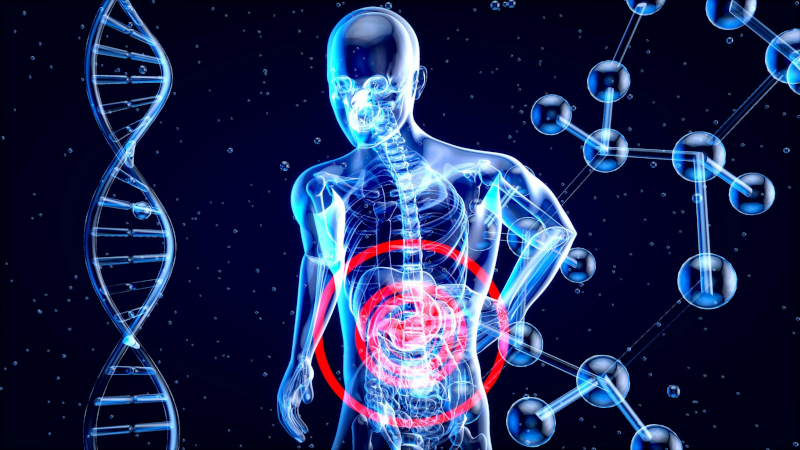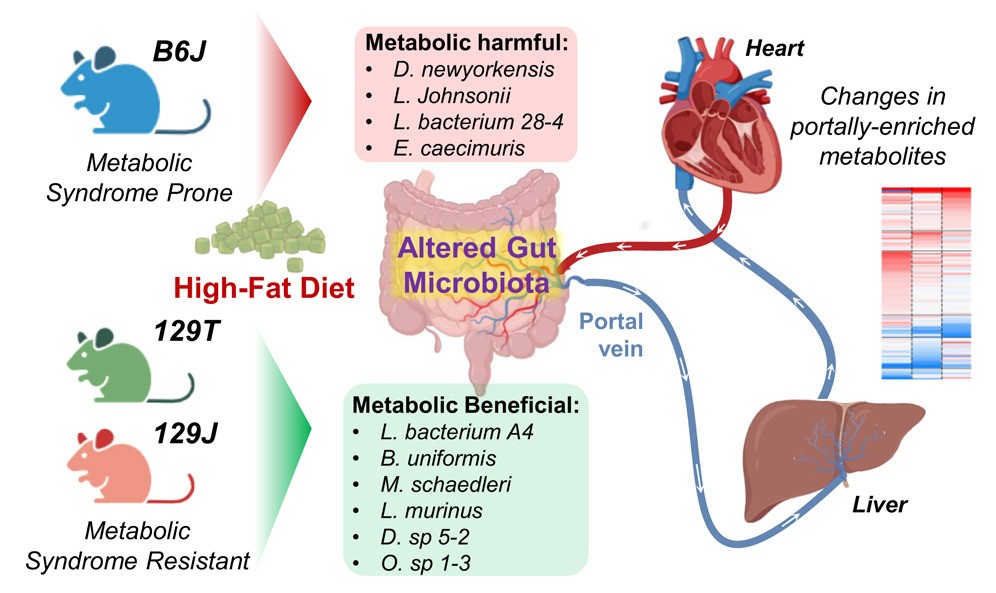

The study was conducted during an internship at the Joslin Diabetes Center at Harvard Medical School (image: Julien Tromeur/Unsplash)
Study shows that the liver receives and sends a series of metabolism-related products derived from the gut microbiome to the heart.
Study shows that the liver receives and sends a series of metabolism-related products derived from the gut microbiome to the heart.

The study was conducted during an internship at the Joslin Diabetes Center at Harvard Medical School (image: Julien Tromeur/Unsplash)
By André Julião | Agência FAPESP – A study supported by FAPESP and conducted at Harvard University in the United States identified a group of metabolites that travel from the intestine to the liver and then to the heart, where they are pumped throughout the body. These metabolites play an important role in controlling metabolic pathways in the liver and insulin sensitivity. This discovery may contribute to future treatments for obesity and type 2 diabetes. The results were published in the journal Cell Metabolism.
“The hepatic portal vein drains much of the blood from the intestine to the liver. Therefore, it’s the first place to receive products from the gut microbiome. In the liver, they can be conjugated, transformed, or eliminated, and then enter the systemic circulation,” explains Vitor Rosetto Muñoz, first author of the study and postdoctoral researcher at the Ribeirão Preto School of Physical Education and Sports at the University of São Paulo (EEFERP-USP) in Brazil.
“By analyzing the blood leaving the intestine and the peripheral blood circulating throughout the body, we were able to more accurately observe the enrichment of these metabolites derived from the gut microbiome in each location and, consequently, how they can modify hepatic metabolism and metabolic health,” adds Muñoz. He conducted this research during an internship at the Joslin Diabetes Center at Harvard Medical School in the United States with a scholarship from FAPESP under the supervision of researcher Carl Ronald Kahn.
In recent years, researchers have identified the gut microbiome as an important mediator of the interactions between genes and the environment that lead to metabolic diseases. Researchers have found significant differences in the composition of gut microorganisms in individuals with and without obesity, type 2 diabetes, glucose intolerance, and insulin resistance, both in rodents and humans.
However, it is still difficult to determine exactly which bacteria or compounds they produce are responsible for these differences, or how they interact with the gut. Therefore, the recently published study analyzed metabolites in the blood of mice with different susceptibility to obesity and diabetes. Blood was collected from the hepatic portal vein, which connects the intestine to the liver, as well as from peripheral blood, which travels from the liver to the heart and is then pumped throughout the body.
“Normally, studies tend to look at metabolites present in fecal material or peripheral blood, but they don’t accurately reflect what’s first reaching the tissue of the liver, which is an important metabolic organ linked to different diseases,” says the researcher.
The study found 111 metabolites enriched in the hepatic portal vein and 74 in peripheral blood in healthy mice. However, when mice susceptible to obesity and type 2 diabetes were exposed to a hyperlipidemic diet (rich in fat), the number of metabolites enriched in the hepatic portal vein decreased from 111 to 48. This shows that environmental factors can be decisive in this regulation.
Many of these metabolites differ from those found in blood collected from the same site in a different type of mouse that is resistant to metabolic syndrome. This suggests that the genetic basis is also fundamental in defining the metabolite profile in the hepatic portal vein.
“This shows that both the environment and the host’s genetics can interact in complex ways with the gut microbiome. As a result of these interactions, different combinations of metabolites may be sent to the liver and subsequently to the peripheral circulation. These metabolites likely play an important role in mediating the conditions that lead to obesity, diabetes, and metabolic syndrome,” says Muñoz.

Diagram summarizing the experiments, which analyzed metabolites present in the peripheral blood and hepatic portal vein of mice with different genetic histories of susceptibility to metabolic diseases after receiving a high-fat diet (image: Vitor Muñoz/EEFERP-USP)
Future
To better understand which bacteria and their byproducts contribute to the production of these metabolites, the researchers treated mice susceptible to obesity and diabetes with an antibiotic that targets specific intestinal microorganisms. As expected, there was a change in the microbiome and the proportion of metabolites in the peripheral blood and hepatic portal vein.
The treatment increased metabolites such as mesaconate, which is linked to the Krebs cycle, an essential metabolic pathway for energy production in cells.
Based on this result, the researchers treated hepatocytes (liver cells) with mesaconate and its isomers – chemical compounds with the same formula but different molecular structures. This treatment improved insulin signaling and regulated genes involved in hepatic fat accumulation (lipogenesis) and fatty acid oxidation – processes that are essential for a healthy metabolism.
“The metabolites found in the blood of these two sites, therefore, play important roles in mediating the effects of the microbiome on liver metabolism and the pathogenesis of type 2 diabetes insulin resistance, which is related to eating a high-fat diet,” says Muñoz.
The researchers are now seeking to better characterize each metabolite and investigate how they are formed. This will improve our understanding of the role of the microbiome in metabolism and may lead to the discovery of molecules that could be used to treat metabolic diseases in the future.
The article “Portal vein-enriched metabolites as intermediate regulators of the gut microbiome in insulin resistance” can be read at sciencedirect.com/science/article/pii/S1550413125003614.
Republish
The Agency FAPESP licenses news via Creative Commons (CC-BY-NC-ND) so that they can be republished free of charge and in a simple way by other digital or printed vehicles. Agência FAPESP must be credited as the source of the content being republished and the name of the reporter (if any) must be attributed. Using the HMTL button below allows compliance with these rules, detailed in Digital Republishing Policy FAPESP.





